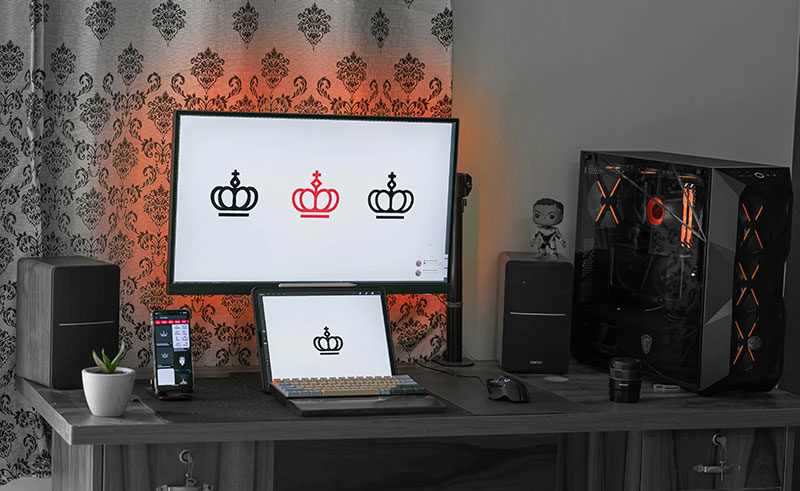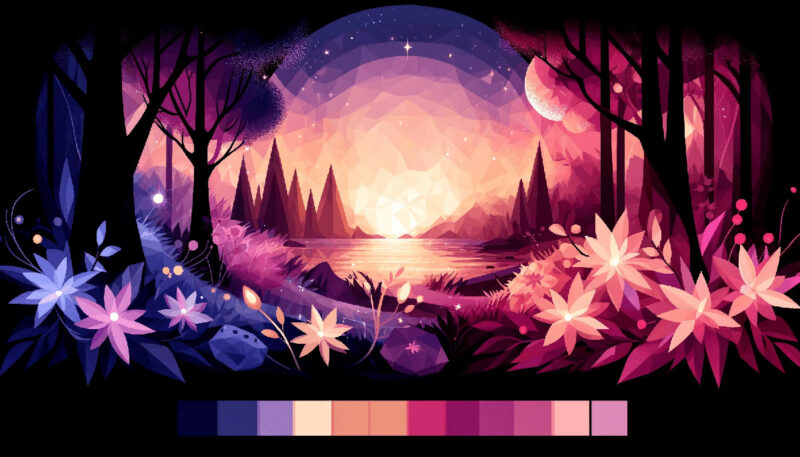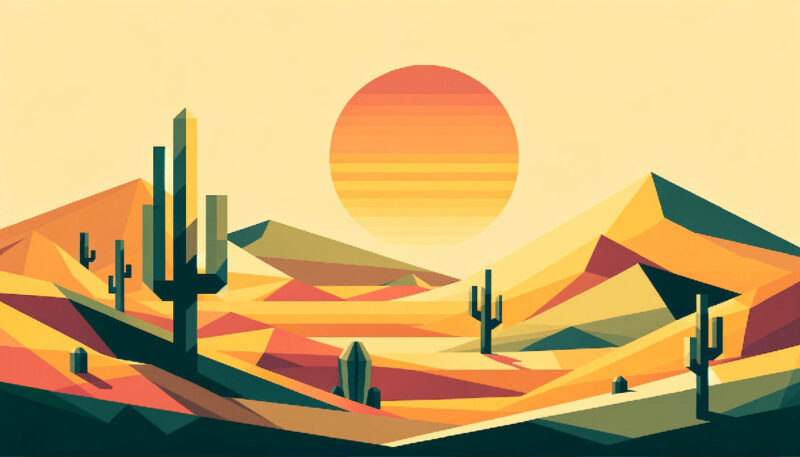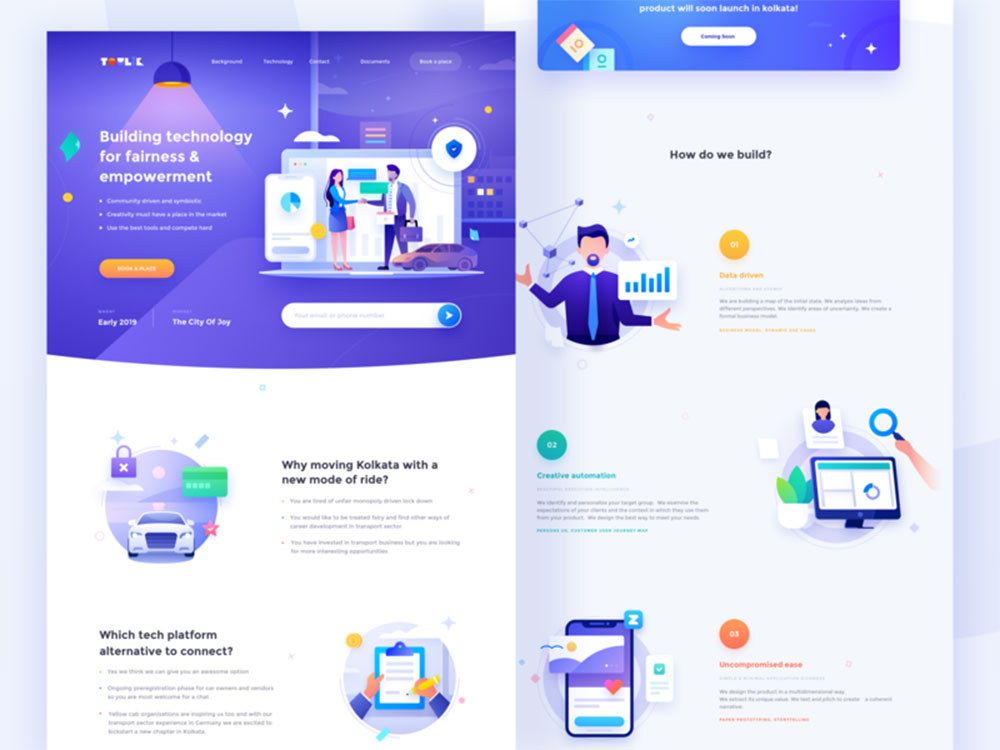Leveraging Generative AI for Innovative Company Website and Logo Design

ChatGPT has made quite a splash over the last year or so. The fuss is largely because generative artificial intelligence is opening up new avenues for everyone. People are using it for everything from creating poems to coding entire websites.
Businesses are increasingly using this new tool to change the way they operate. We’ve only scratched the surface of this nascent technology. However, it already looks like it will be as revolutionary for web design as customer care outsourcing was for customer service.
In this article, we’ll look at how you can use this new technology to create your website and logo.
Unleashing Creativity through Iterative Exploration
Would you like to see different color schemes, visual themes, and stylistic variations in quick succession? In the past, this meant physically inputting the parameters and manually changing them every time.
Generative AI can do this for you, making it easy to view an array of design options quickly. You may or may not settle on one of these, but it does make it easier to see the possibilities.
Your team can use this as a springboard to creatively explore various designs. You can then refine your design and tweak it for the best possible results.
Personalized Brand Expression
Where generative AI can be really helpful is that it can tailor design outputs. You can input the parameters so that they perfectly match your brand identity. You can use it to edit written content for tone or to create design solutions.
However, AI can be useful for more than simply churning out ideas. It can also analyze customer data to identify preferences and trends. This is useful for crafting high-converting content, imagery, and typography that will appeal to your target audience.
By asking AI for help, you can ensure that you keep a cohesive feel across your logos and your site.
Streamlining Design Workflows with Automation
One area of web design that is challenging to get right is smart workflows. The coding you use has a huge impact on how well your website works. You can ask AI to write workflows and the coding that goes with them.
You can use this to automate design tasks like:
- Generating layout options
- Refining color palettes, and
- Optimizing typography
This automation not only saves time but also allows your designers to focus on higher-level creative tasks, such as conceptualizing innovative design concepts and refining user experiences.
Enhancing User Experience with Data-Driven Insights
AI can collect and analyze vast amounts of information, allowing you to make informed choices. You can, therefore, optimize your customer experience across your entire website.
Through predictive analytics and user behavior analysis, AI algorithms identify patterns and trends that inform design decisions, such as:
- Optimizing website navigation
- Enhancing visual hierarchy and
- Tailoring content for specific audience segments.
By leveraging data-driven insights, you can create intuitive and engaging digital experiences that captivate users and drive meaningful interactions.
Facilitating Collaboration and Co-Creation
You might need to work with multidisciplinary teams from different departments. AI can provide a common platform for ideation and experimentation. You can also collaborate with external teams in need.
You can work together in real time, with each member making changes as necessary. You can, therefore, work with designers on the opposite side of the world.
You can also use this technology to connect with focus groups and ensure that your customers get the best possible experience.
Adapting to Evolving Trends and Preferences
It’s essential to keep up with evolving design trends and customer preferences. This can be challenging for a marketing company working with these things every day. You have hundreds of other tasks to accomplish, so it pays to have a little cheat sheet.
Generative AI can help you maintain good agility by analyzing market changes and emerging trends. It can use predictive analytics to identify emerging design trends and anticipate future directions in digital branding.
This proactive approach enables you to stay ahead of the curve and maintain relevance in an ever-changing marketplace.
Ensuring Consistency and Cohesion Across Brand Touchpoints
It can be challenging to keep a consistent image across all the client touchpoints. You need to make sure that your social media posts, Generative AI, ensure consistency and cohesion in branding by enforcing design standards, style guidelines, and visual elements across company websites and logos.
You can use centralized design repositories and asset libraries to maintain brand integrity and coherence. This way, every customer interaction will offer a unique insight into your brand.
Conclusion
Generative AI seems set to be as disruptive in the design industry as it is everywhere else. It makes it easier for you to innovate, differentiate your brand, and engage with your audience. It can help you to create a compelling website and dynamic logo
By harnessing the creative potential of Generative AI, businesses can elevate their brand presence, foster meaningful connections with consumers, and drive sustained growth in an increasingly competitive landscape.
- Purple Color Palettes Fit for Royalty - 16 May 2024
- How To Find A Font: Top Font Finders To Use - 16 May 2024
- The Guinness Logo History, Colors, Font, And Meaning - 15 May 2024









